To call Avakaya a mere pickle is doing injustice. It is the mythical Amrutham or elixir of my life. On days when I’m down and out, avakaya mixed with hot rice brings me back to life.
Avakaya is a pickle—mostly from the Telugu-speaking states—made with raw mango, mustard powder, chili, salt, and oil. The vinegar substitute varieties in stores are merely poor its cousins. And I believe my mother makes the best version of it. It is not empty bragging; anyone who has tasted her pickles will vouch for their divine taste.
I have vague childhood memories of her mixing spices in our cramped kitchen and filling big ceramic jars with the pickle. But my knowledge has remained purely theoretical. I’m better off eating than attempting culinary feats.
The Covid years disrupted her annual pickle making, so it had been three years since she made her last batch. I was craving for her version, and my own stock of avakaya gifted from relatives had dwindled. So, I urged her to restart her tradition, offering my full support and cooperation.
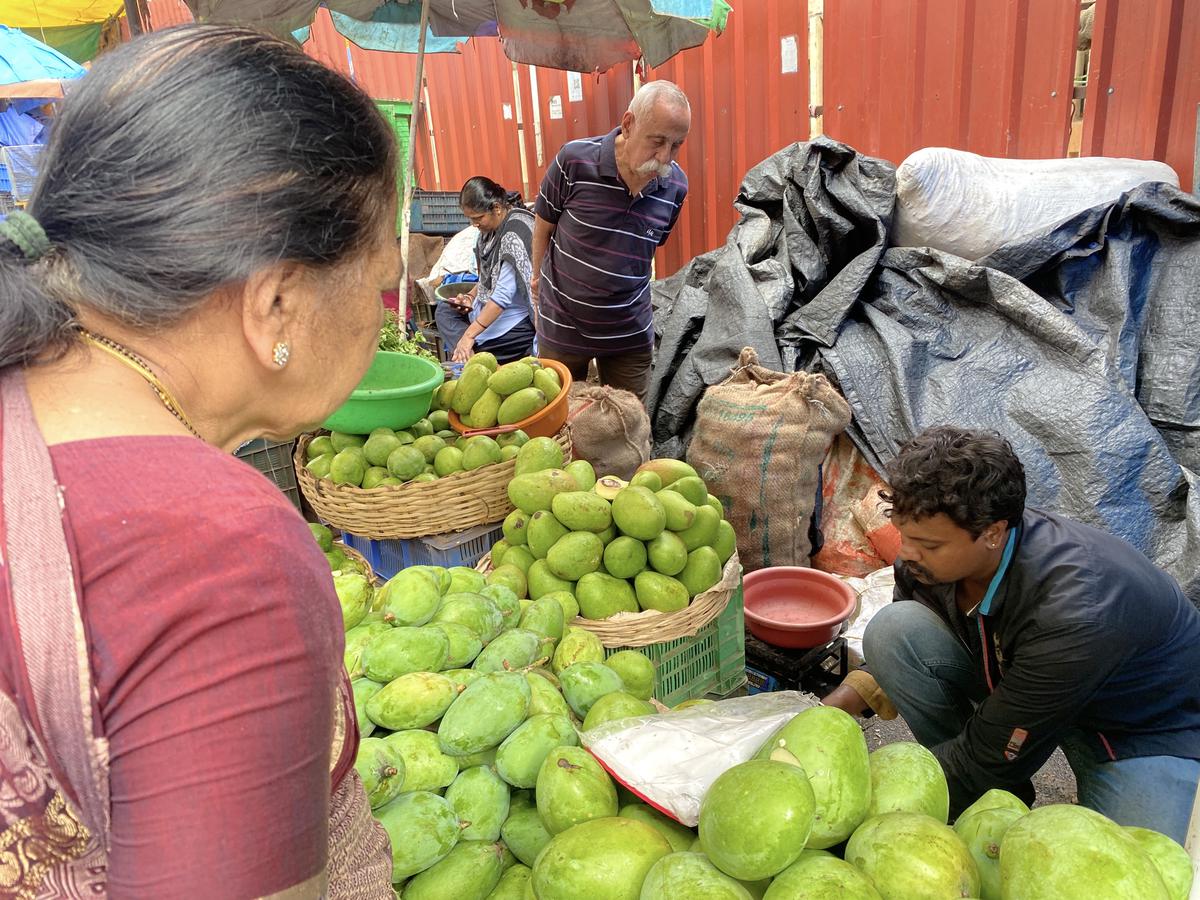
Naati mangoes for Avakaya Pickle
| Photo Credit:
Special Arrangement
There are just six ingredients that need to be put together; how hard could it be, I reasoned. So, my parents and myself—with a helping hand from my ten-year-old—started gathering them.
It starts with buying the naati variety mangoes—picked carefully, the right kind of raw and the right kind of tangy, without a hint of sweetness. After much back and forth, my parents ended up with about 10 mangoes instead of my humble aspiration of three or four. Well, it didn’t seem too much when my mother bragged, “Those days I used to make it with 35-40 mangoes.” In comparison, a mere 10 seemed doable.
While my mother washed each mango, my father and I wiped them clean with a towel. The skin of the mango had to be dark green in colour and thick. The shopkeeper cut them into pieces that were almost one-inch each. Each piece had to have a part of the seed coat or hard shell.
His sharp knife sliced through the mango shells as though it was butter. This triggered some doubts—”Are the mangoes hard enough?”, “Are the pieces too big?”, “Is the shell too small?” Finally, we returned with a stock that somehow seemed much larger than the 10 mangoes we started with. My mother likes to think big when it comes to cooking.
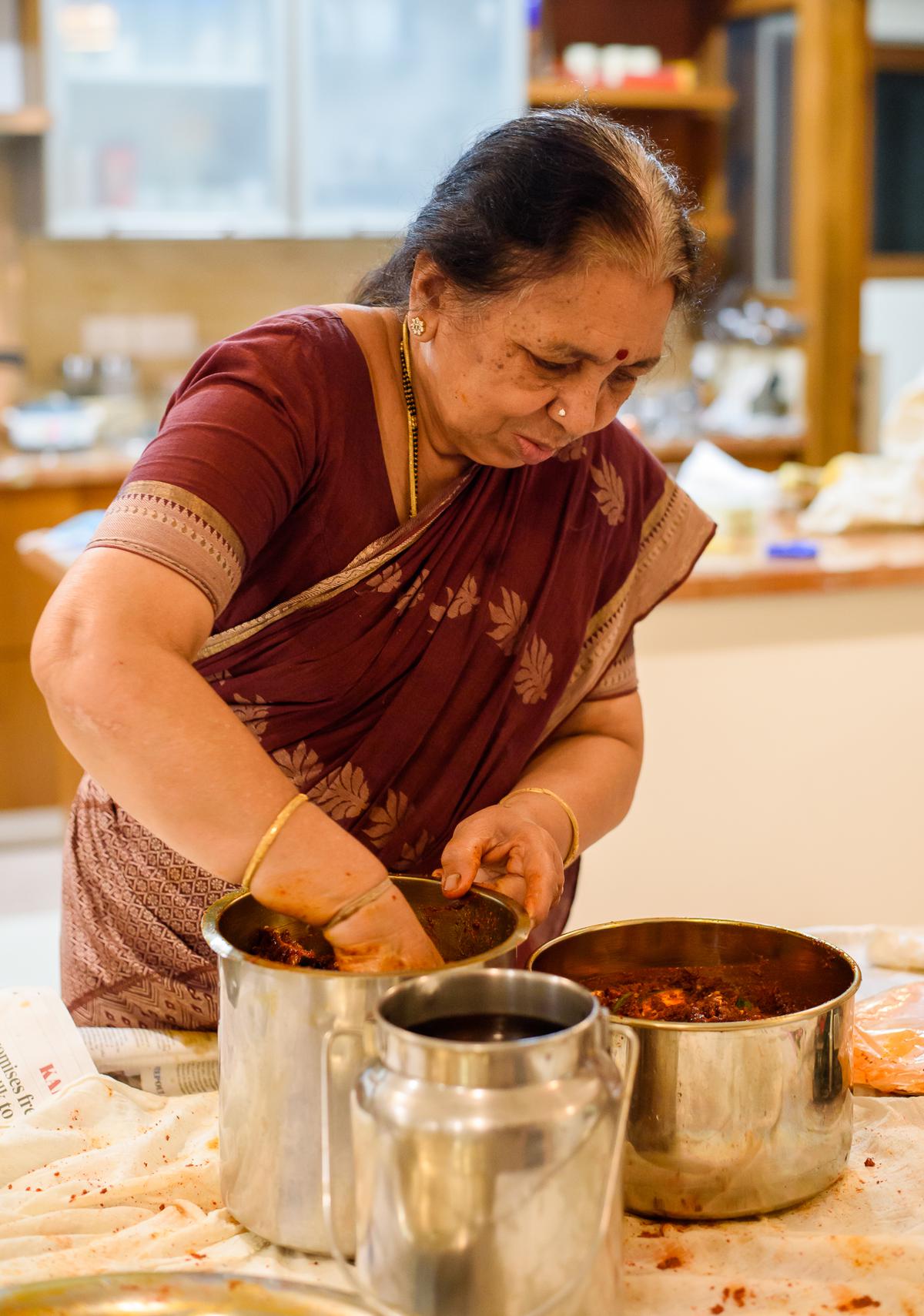
Avakaya Pickle mixing
| Photo Credit:
Special Arrangement
The real challenge had just begun: deciding on the level of spice. My parents are from the Nellore-Gudur belt, a region known for its spicy chilies. So naturally, their threshold for spiciness is quite high. A big reason why they make their own pickles to suit their palate.
They debated the pros and cons of several brands of chili powders— some even from the neighboring three states. They recollected what happened in earlier years when a particular brand was chosen over some other, literally looking down their noses at those brands for their gross inadequacies. Once the chilli powder was settled, it was time to move to the rest of the ingredients: Rock salt, sesame oil, turmeric, asafoetida and mustard powder. Plus, of course, fenugreek seeds, which act as coolants against the chilli and mustard powder.
Finally, we were all set to begin the process.
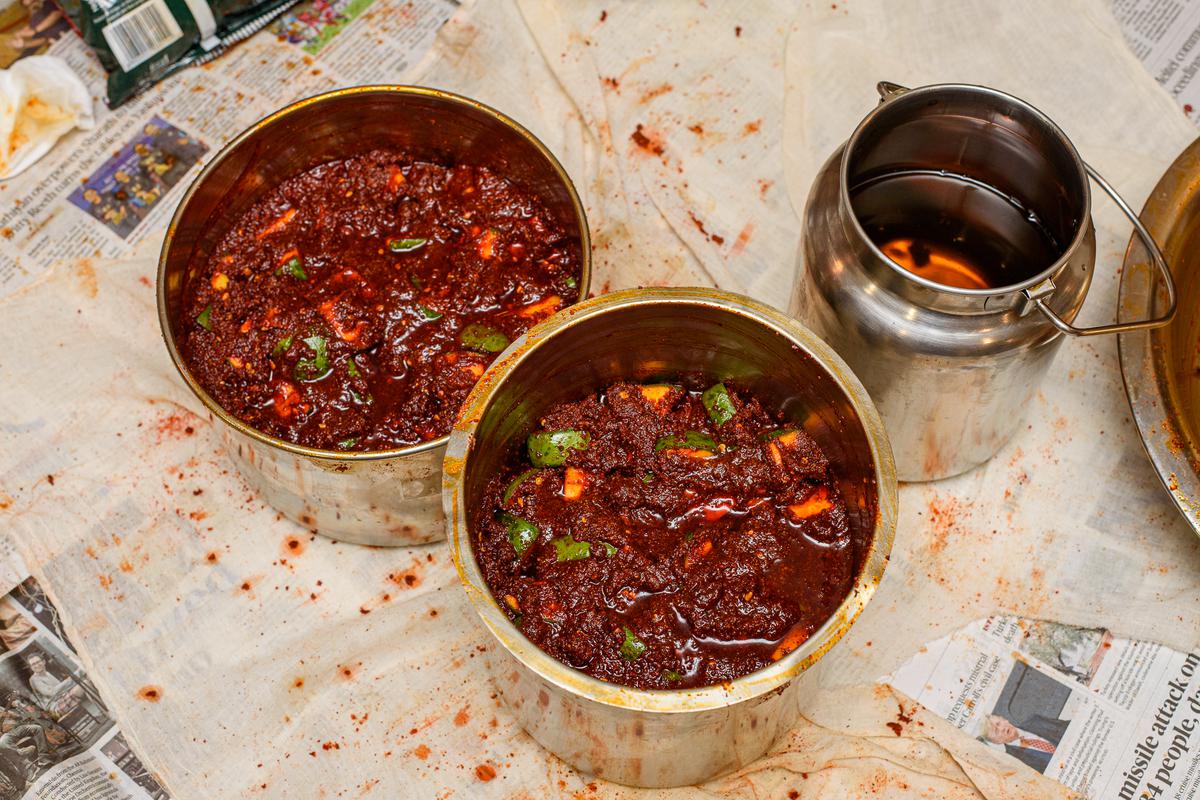
Mixed Avakaya pickle
| Photo Credit:
Special Arrangement
While my parents, both of whom are retired teachers, debated the quantities, the scale bothered me as we did not have the right vessels to mix or store them. My mother, who has a go-doer attitude, had various solutions—all of which involved several vessels.
She had her own reasoning. But I lost the plot when she spoke in terms of “heaps” instead of kilograms and grams. Not knowing how to help, I officially gave up and decided to be a spectator. Better still, I started to take pictures, a job I much prefer.
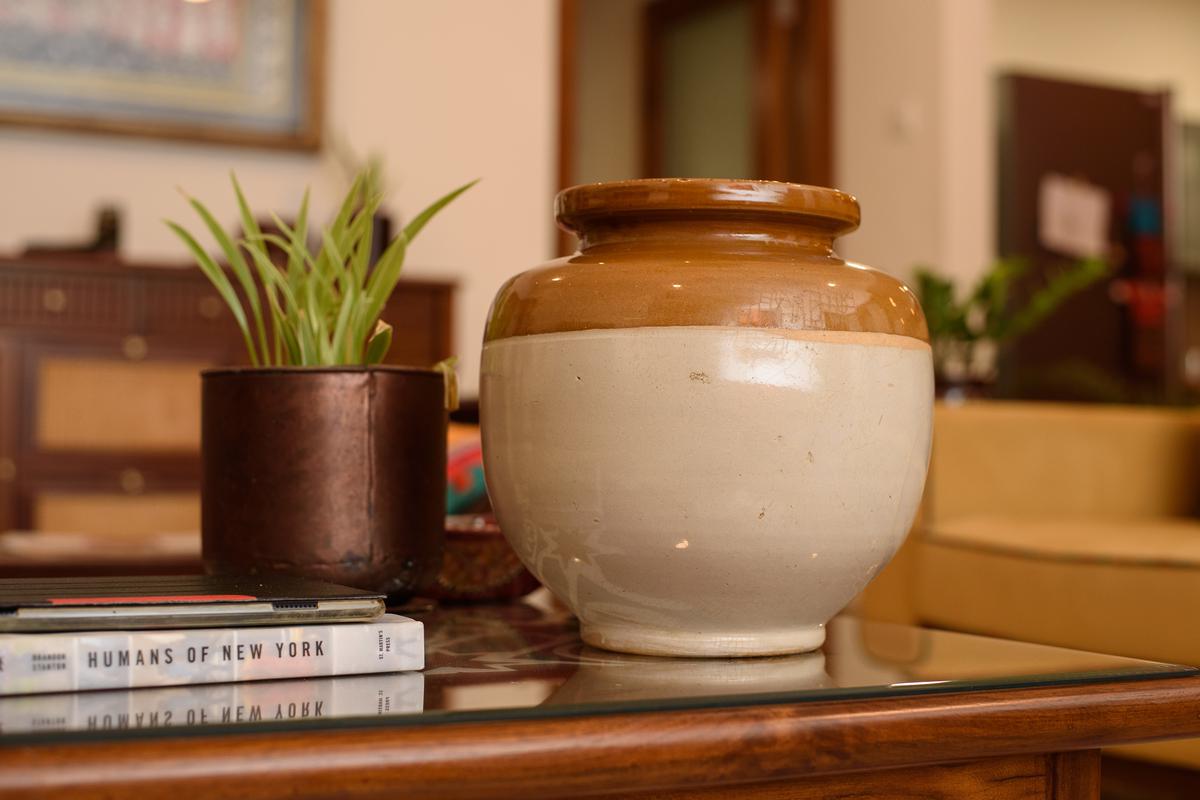
Ceramic pickle jar
| Photo Credit:
Special Arrangement
I broke into a sweat at the prospect of staining our floor tiles and the marble countertop with chili red. My father layered up several newspapers and an old blanket on top of our dining table. The stage was set for the pickling drama.
As my mother mixed the ingredients with her bare hand, we debated if we should use my late grandma’s pickle jar to store the pickle. “Why not use it? After all, it is meant for storing pickles,” my mother said. It is a jar several decades old. Right now, it is a precious ornament at home. I did not have the heart to use it should something happen to it. So, in the middle of pickling, my father and I shopped at a nearby store for two new ceramic jars to store the pickle in.
My mother followed a process: She layered a heap of the mangoes, kept dunked in oil, then added a layer of dry ingredients, then poured more oil to wet the powder. This layering was repeated before more oil was added in to ensure it would trickle down to the bottom. Finally, the layers were mixed.
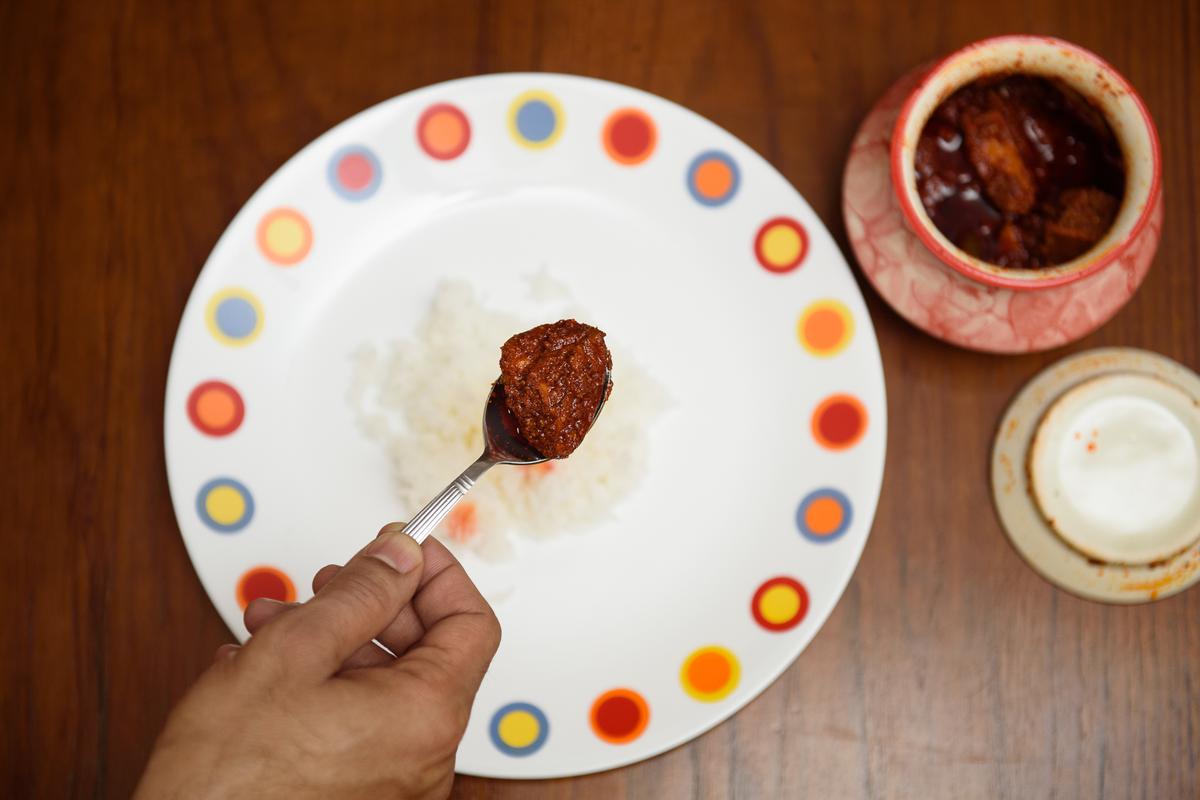
Avakaya rice
| Photo Credit:
Special Arrangement
The pickle filled into in the new jars to rest for three days, to allow the mango chunks to absorb the spices, before it could be eaten. One can always add a little extra oil or spices after this resting period to adjust the taste and texture. As the oil, or oota in Telugu oozed to the top over the next three days, we all had an irresistible urge to taste the pickle.
I took a tentative spoonful and mixed it in hot rice, adding a helping of ghee. “Is the salt enough?”, “Is it too spicy?”, my mother asked eagerly. She needn’t have worried. As the spices hit all the right notes on my palate, I felt immensely satisfied. This pickle, spicy with just a hint of tanginess, has no match in my world.
Stay connected with us on social media platform for instant update click here to join our Twitter, & Facebook
We are now on Telegram. Click here to join our channel (@TechiUpdate) and stay updated with the latest Technology headlines.
For all the latest Food and Drinks News Click Here
